The roots of friendship for this nature island have grown deep into our hearts during our stay in the bay of Prince Rupert. We have discovered fruits and vegetables that we did not know existed. Hikes through bright green rainforest in company with local guides have led us to hot or cold water, whatever our desire was at that moment. The green surroundings have been a fresh dwell of nutrition for both body and soul, a place to rest and become refreshed. Wherever we go, we are greeted with joy and caring questions, connecting us closely to this island.

Dasheen 
Lime 
Bird of Paradise
During the quarantine we heard cocks crowing and church bells ringing when the sun rose in the morning. Later, on a Sunday, we joined the service in the catholic church at eight in the morning. What an experience it was! The music from the choir filled the church with life and joy. (Rihanna must have relatives on this island!) The church community participated, sang and danced and it was a privilege to take part of it.
Our guide, Boudah, who is a botanist, showed us all different kinds of local plants and fruit trees, such as cashew, plantain, mango, dasheen, lemon grass, guava, tambourine, lucas fruit and different kinds of coconuts. All to find close to the road. We could even see a green Jaco parrot. We were overwhelmed! Thrilled, we continued to Pointe Baptiste Chocolate Factory, where we met chocolatier Alan Napier, who many years ago started to make chocolate in his garden. After years of trial and error and research, he has found his own ecological technique of making fine chocolate. He showed us the cocoa plants and fruits and we could taste the slightly sour, juicy flesh surrounding the bean. The bean is purple inside and tastes nutty while its fresh. The beans are being fermented in wooden boxes, covered with banana leaves. After five days they are ready to dry in the sun, protected from rain under a roof. The further procedure is chopping, separating the peeling from the bean and then grinding them for four days. The earthy delicious smell alone is worth a visit to the factory. The last step is to heat up the chocolate to the melting point and eventually flavour it with ginger, spice (the local name for cinnamon) or coffee.


Sensitive plant 
Cashew Flower 

cashew nut tree 
Boudah explains 


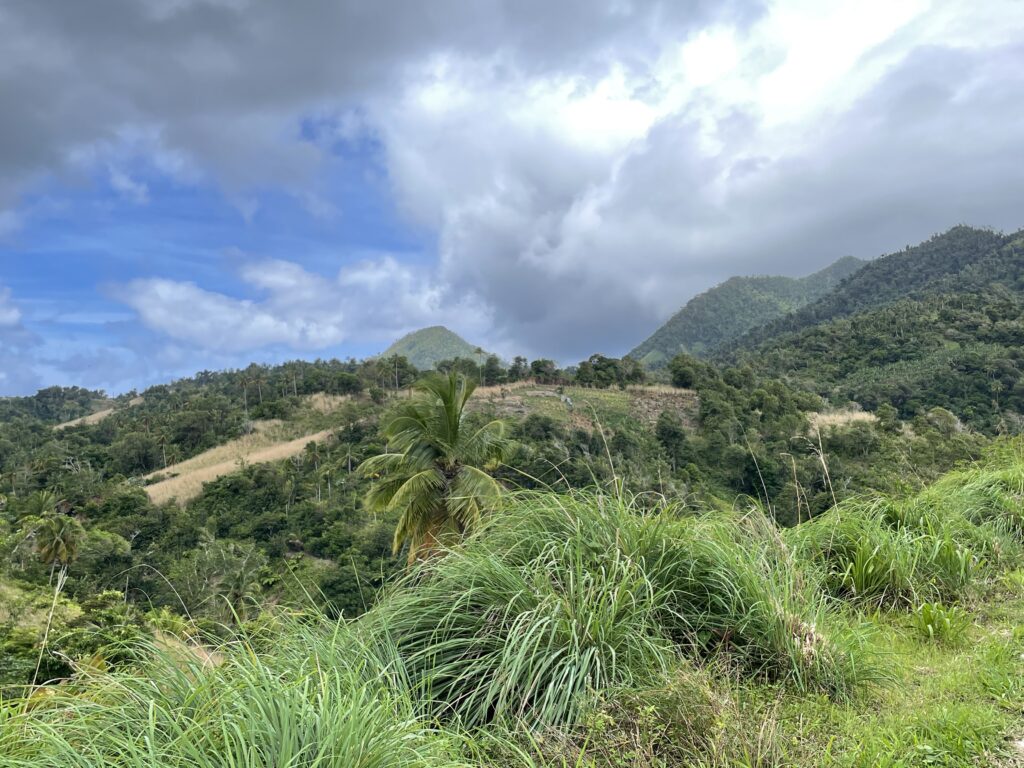
It has been a long lasting dream to see the procedure from bean to bar and to have the chance to talk with Alan about his learning progress was a treat. Of course, tasting the different chocolate bars was the peak of the visit at Pointe Baptiste Chocolate Factory.

wild cocoa 
cocoa 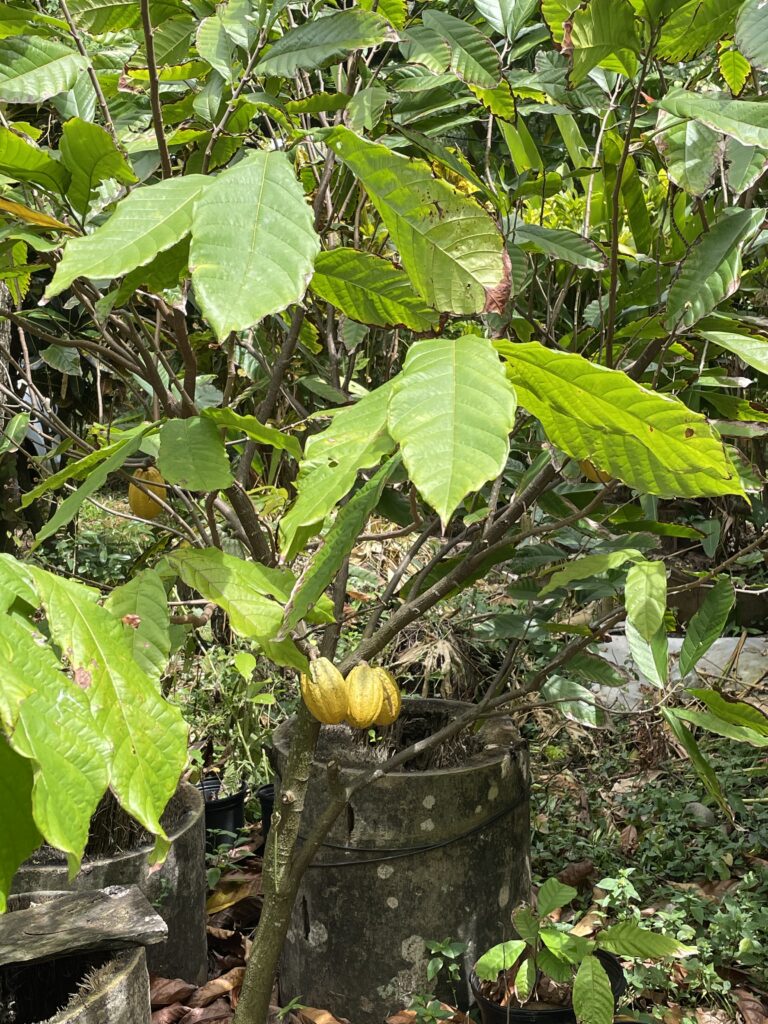
cocoa tree 
Alan Napier 
cocoa beans 
fresh cocoa bean 
fermentation 
fermentation box 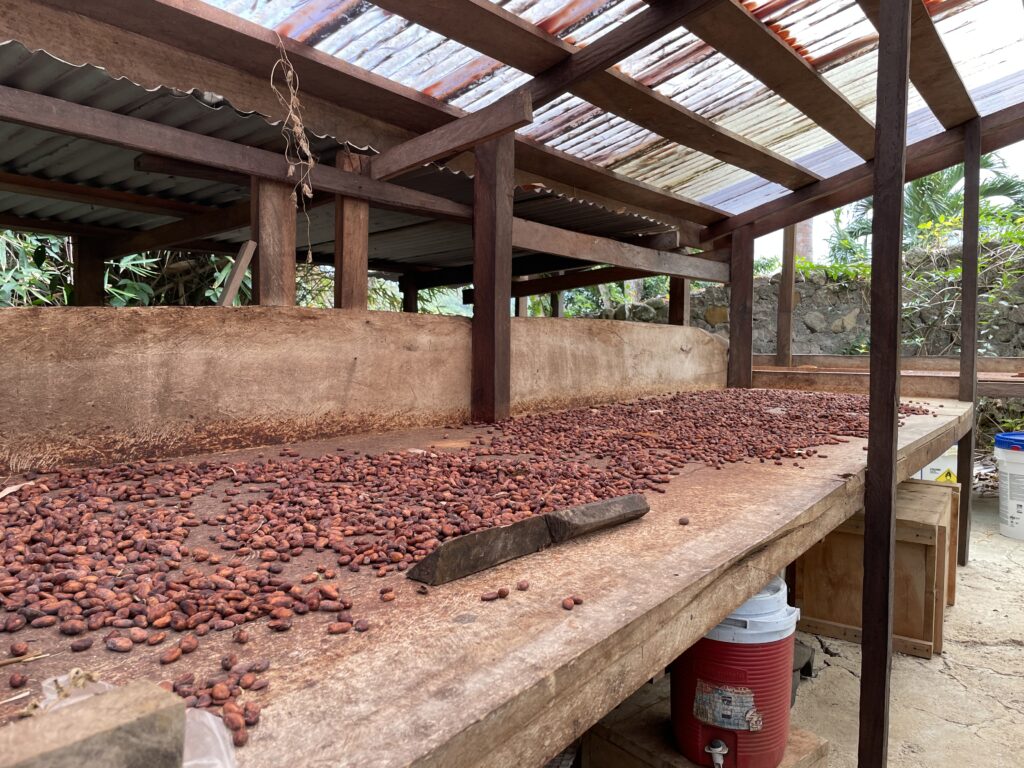
drying beans 
cocoa beans 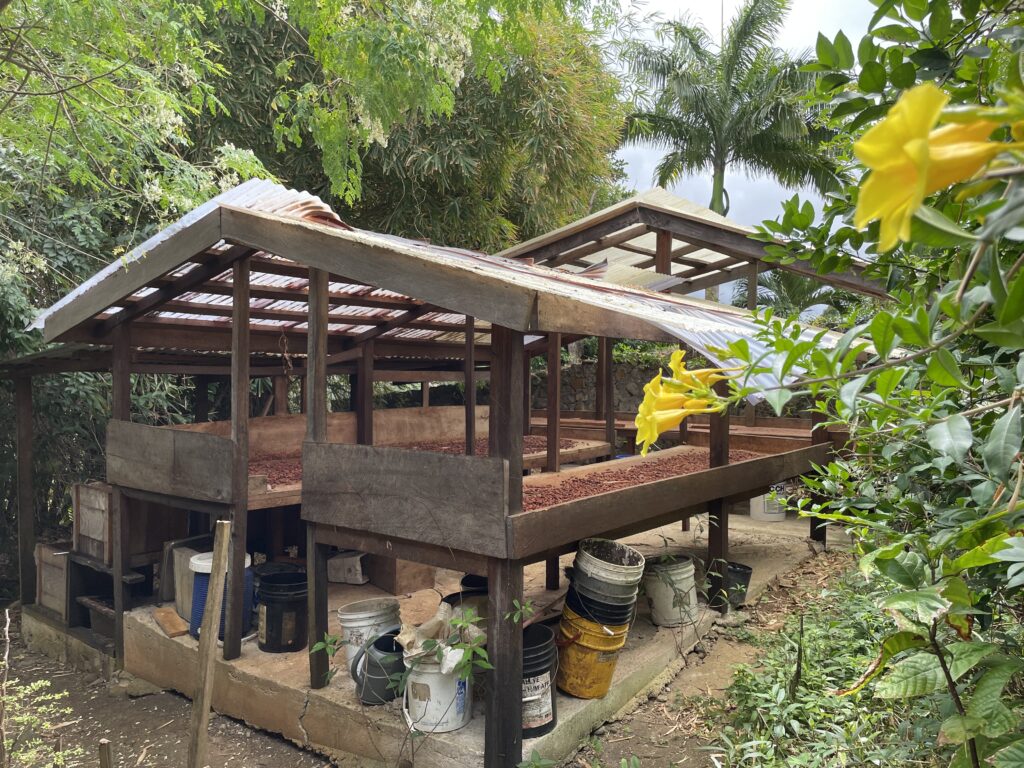
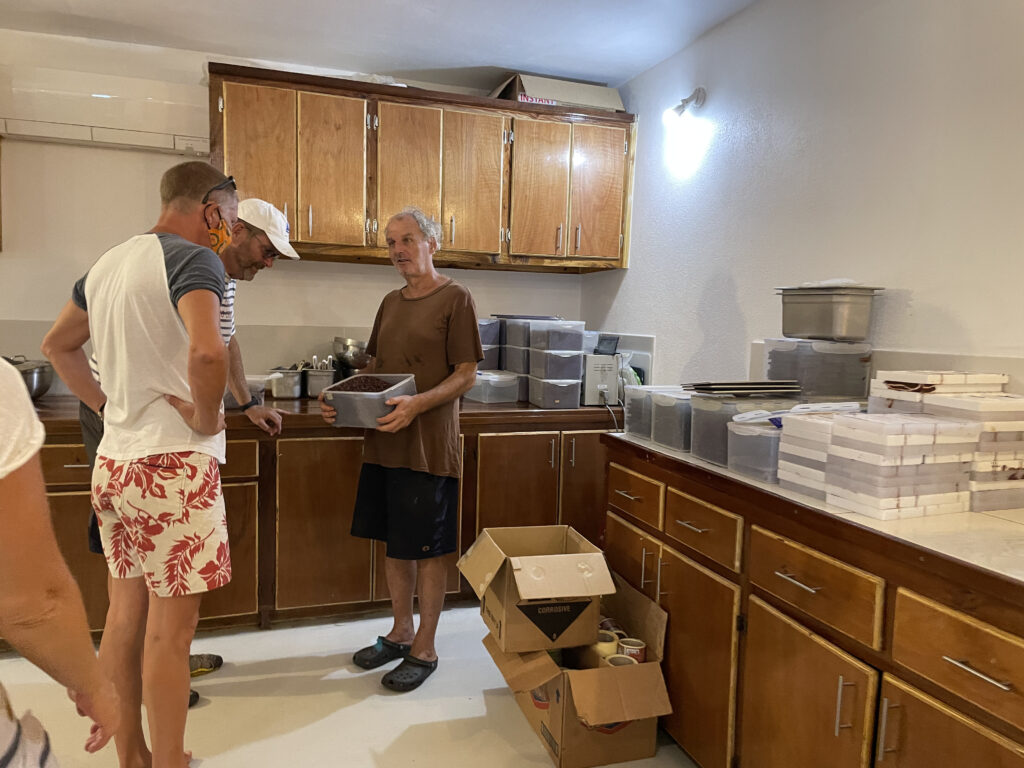
cocoa nuggets 
separator 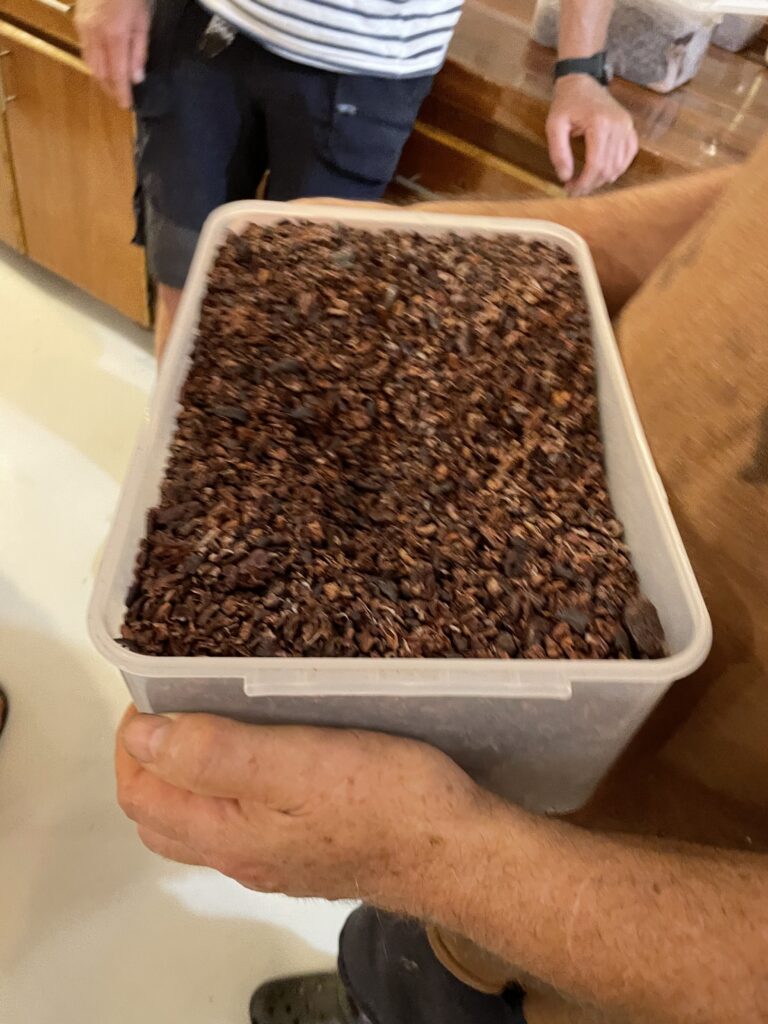
chocolate 

To the Bat Cave!
Passing Thibaud on the north east side of Dominica, we made a stop and went for a walk to a Bat Cave. The hike followed the rocky shoreline and it was sometimes a little challenging. Memories of previous `close to water` experiences came to the surface and it was good to feel the strength of overcoming the fear. Rocks formed by lava from one of the nine vulcanos on the island vary in the most spectacular forms and pattern. The waves from the impatient Atlantic smash into the cave where thousands of bats share the company of big light pink crabs. It was interesting to see how tight the small bats held close to each other at the roof of a small tunnel in the cave. Sometimes the bat dung, called guano is being collected and used as fertilizer. Not this time.





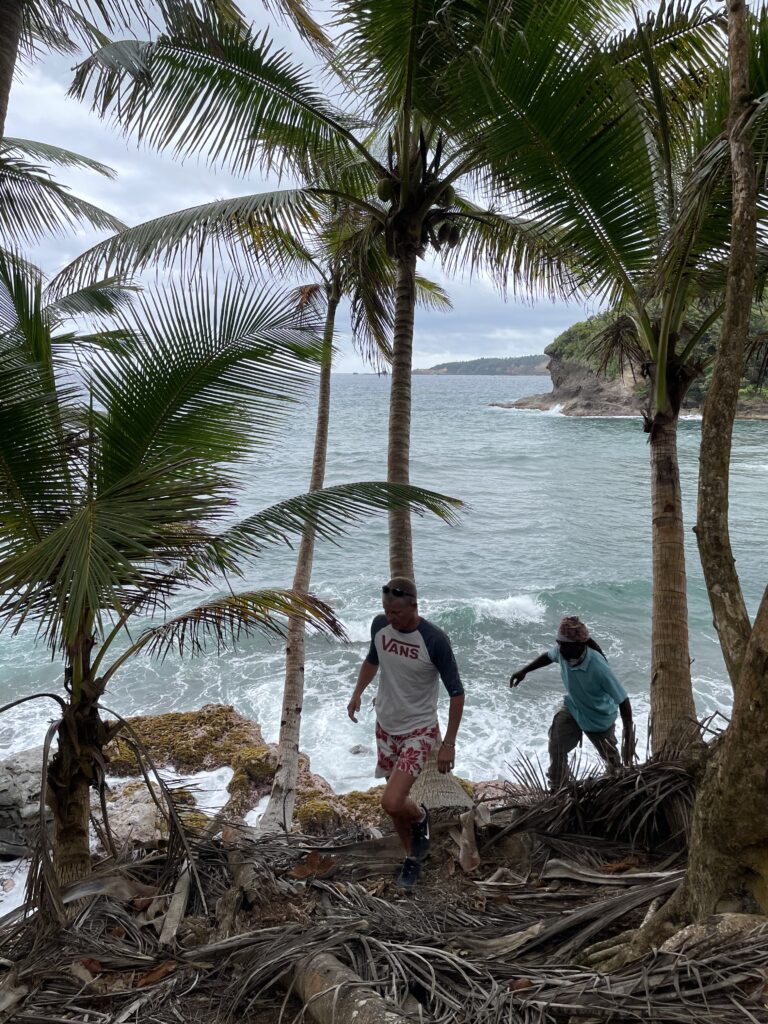


Bat cave 



Made it! 

Red rock 




Nina Jill Nilla 
Calibishi 
Octopus with local veggies
Kalinago territory
Long before Europeans settled down in the Caribbean, Dominica was inhabited by Kalinagos. They fought a hard fight for their land and mainly lost. 1530ha is a small lot of land on the east coast of Dominica that remains theirs since the Kalinago territory was established in 1903. All descendants from the Kalinago people may live on the territory and build a house on the land and the land is communally owned. This can be a disadvantage for individuals as they cannot use the land as a collateral at a bank for a loan. We drove by and stopped, admiring the beautiful handcraft, made of grass that had been dried and cut into thin slices, then coloured in natural brown colours before woven to pretty baskets.




Kalinago handcraft 

Bwa Nef Waterfall
Long before sunrise on a Saturday, farmers come to the market in Portsmouth. If you need anything special, you have to be early. We were happy to find pineapples, papaya, passion fruit, mango and plantain. We bought some sweet potatoes from a local farmer, Clebert. While we were discussing how to prepare it, we came into a discussion about waterfalls and he invited us to come and see the waterfall on his farmland. We decided to meet another day at a special sign on the road. Being foreigners, we didn’t find the place, but locals helped us. All knew Clebert.

Portsmouth market 


Clebert and Nilla 
Stich showing the way 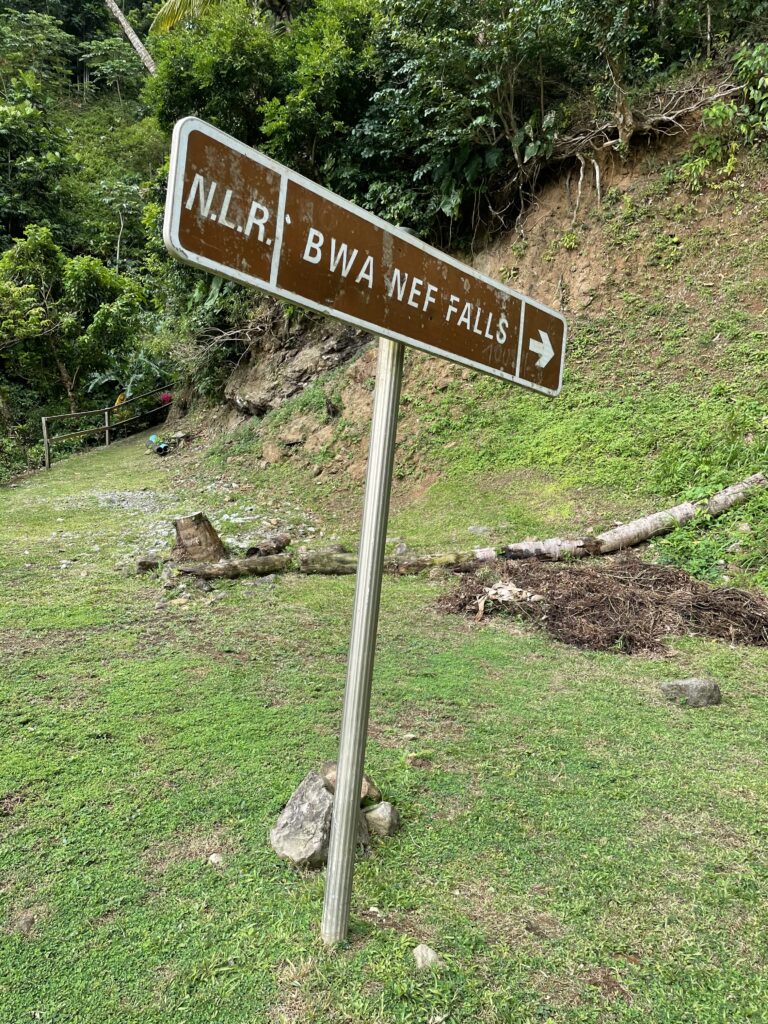



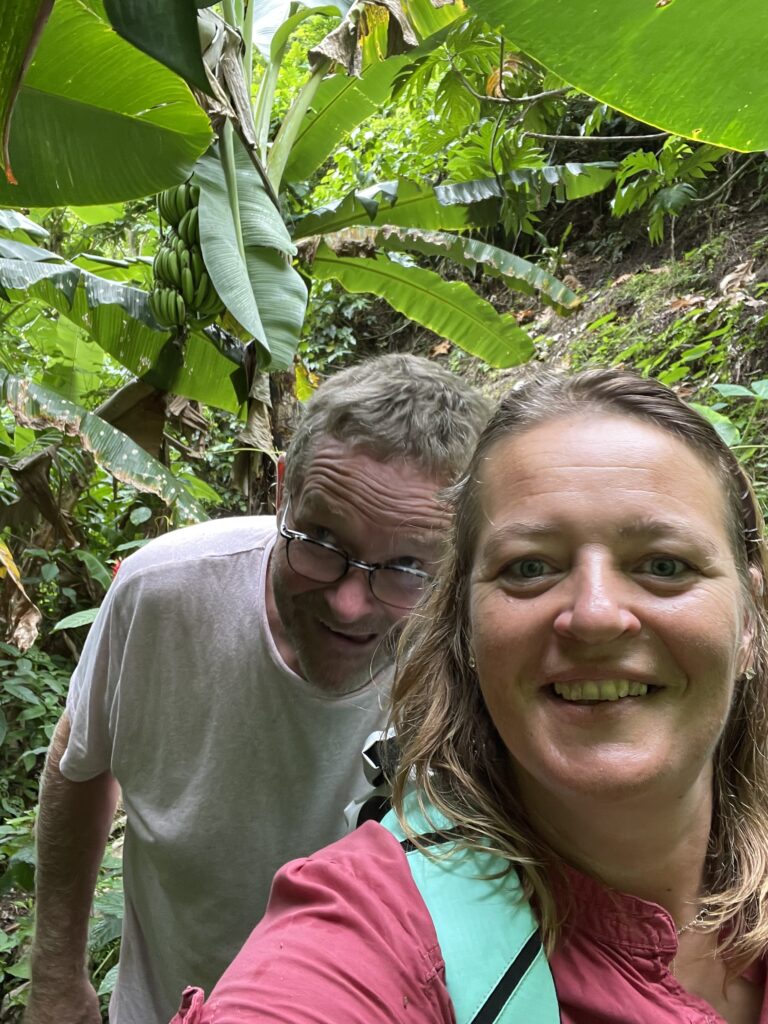

nutmeg tree 
nutmeg flower 
natural soap leaf 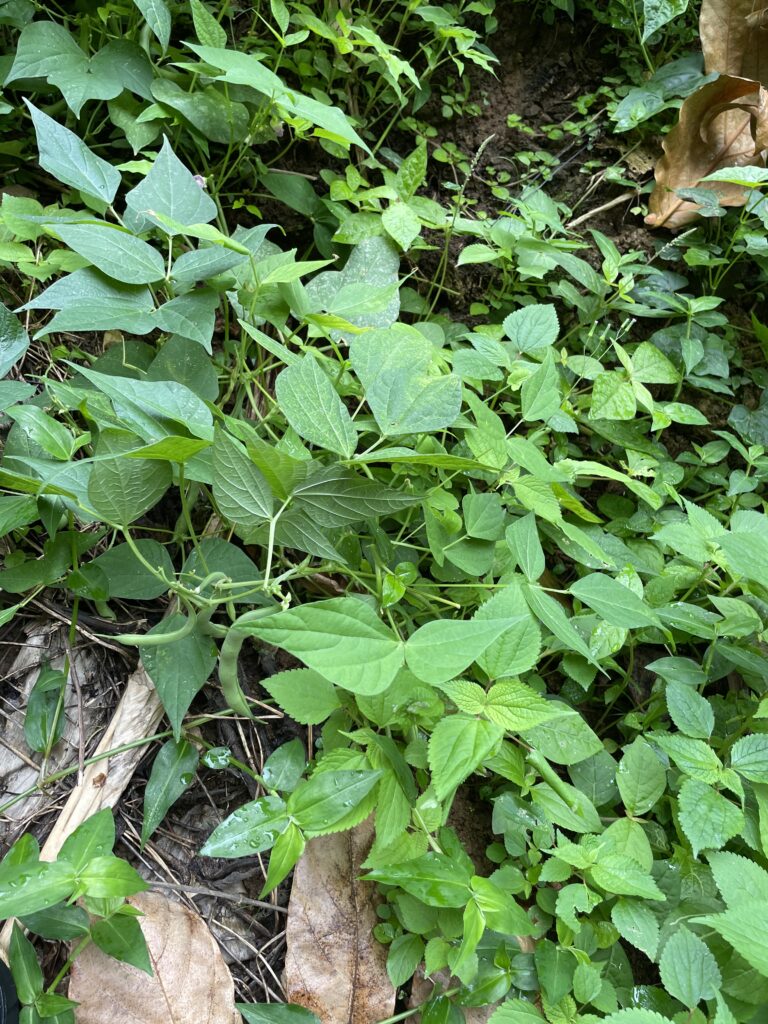
beans 
Cleberts farm
He showed us his farm on the steep hills on both sides of a river. He had inherited the land from his mother and cultivated different kinds of bananas, dasheen, beans and papaya all by hand along the hillside. We learned that the small flowers on the huge banana flower is a remedy from cancer. We tried some juicy but slightly bitter flowers. A huge leaf could be used as soap, thanks to its tender smell when being rubbed against the palm. Lemon grass, Bayleaf and natural eatable begonia covered the path on the way to the Bwa Nef Waterfall, hidden behind a high cliff. It was impressive to see the waterfall and Anders took the opportunity to have a refreshing bath.
We are so thankful that Clebert took the time and showed us the way to his waterfall and tought us how to prepare plantain and dasheen and much, much more.





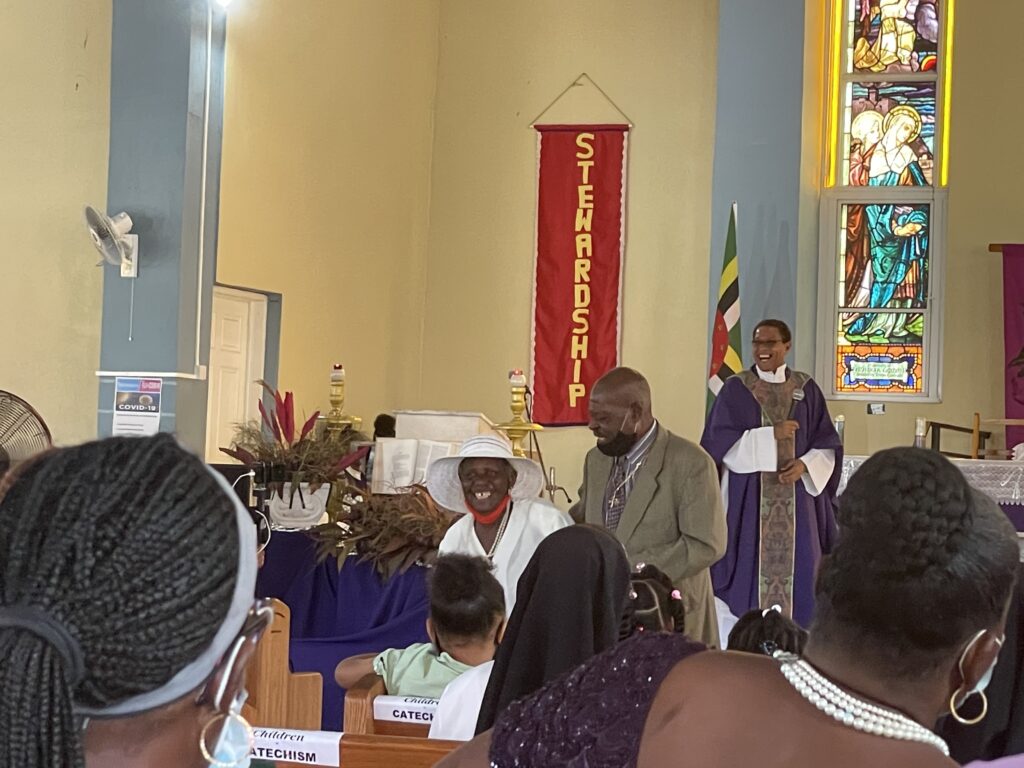





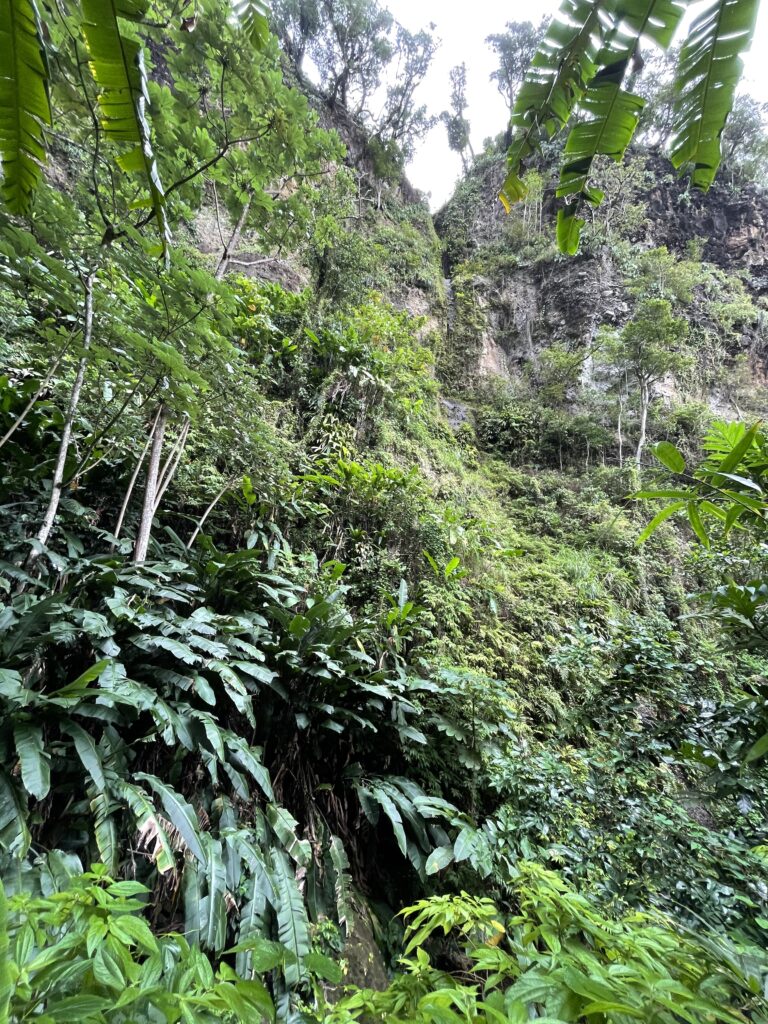

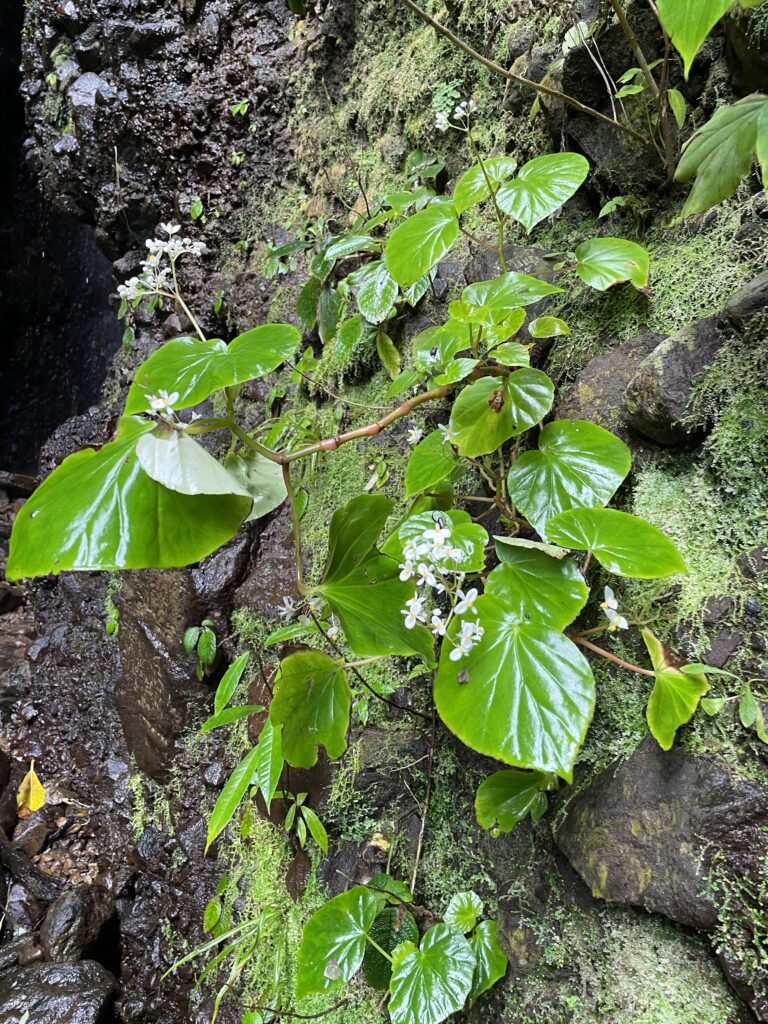





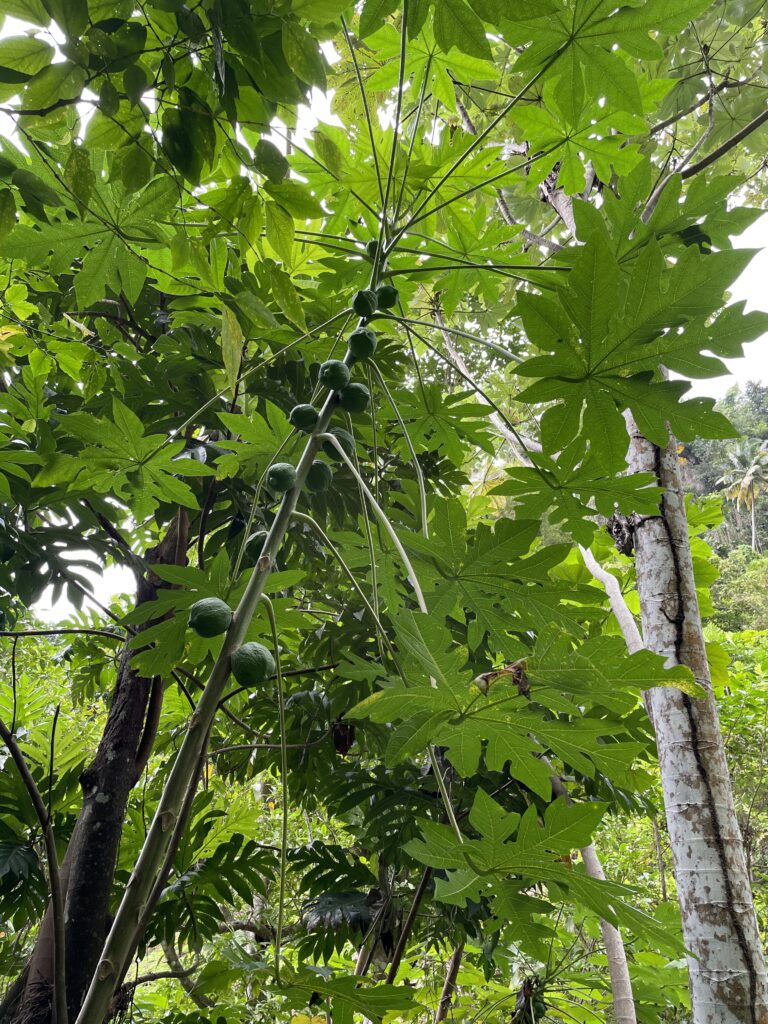
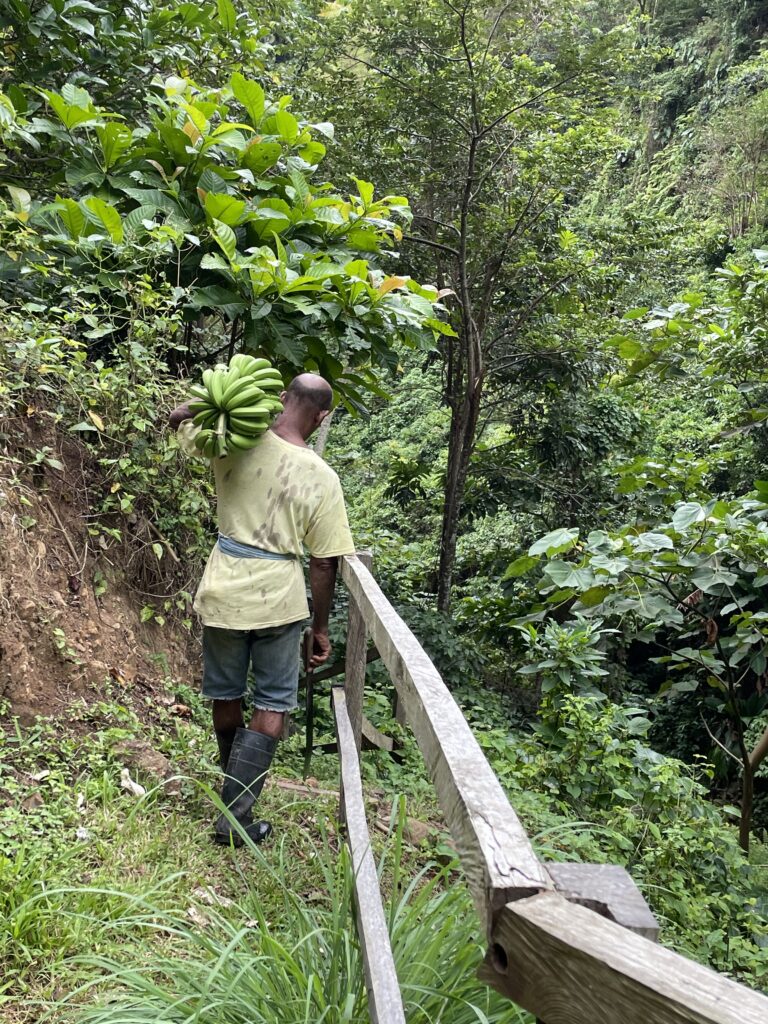

Oj vilken fantastiskt fint berättad skildring. Tack för att ni tar er tiden att förmedla. Kram från ett Onsala som vaknar i vårsolen
Vi är så lyckliga att få uppleva öarna här i Karibien i lugn och ro och gläder oss att du vill läsa! Många vårkramar
Tack för att bli tagen till platser och erfarenheter vi inte upplevt. Vi njuter med er. Glad påsk!
Kerstin och Claes-Göran
Delad glädje är dubbel glädje! Glada vårhälsningar från union Island
Så roligt att få följa med i fantasin ! Glad Påsk 🐣!
Vi är så glada att ha hittat nya smultronställen och få visa dem! Glada vårhälsningar
Bonitas fotos de uma inesquecível beleza e uma viagem para recordar para todo o sempre parabéns
Gracias! We are so happy to have found this beautiful island. Many greetings!!
Extraordinaria belleza. Buena suerte y buena salud en esta bonita travesía.
Abrazos desde Madrid.
Pilar & Manuel
Dear Pilar and Manuel! We are so happy to hear from you and glad that you read our stories! Hope everything is well in Madrid.
Abrazos desde Union Island
Anders and Nilla